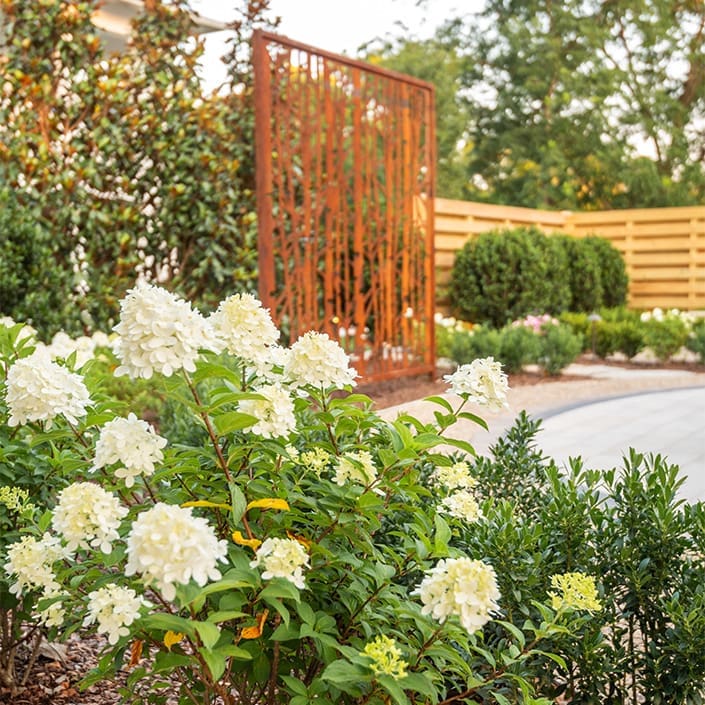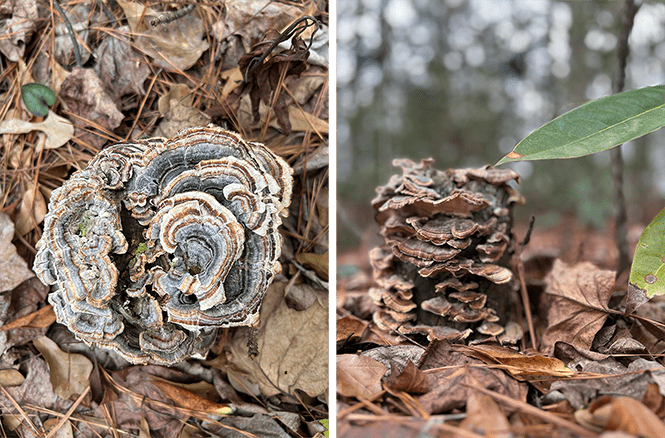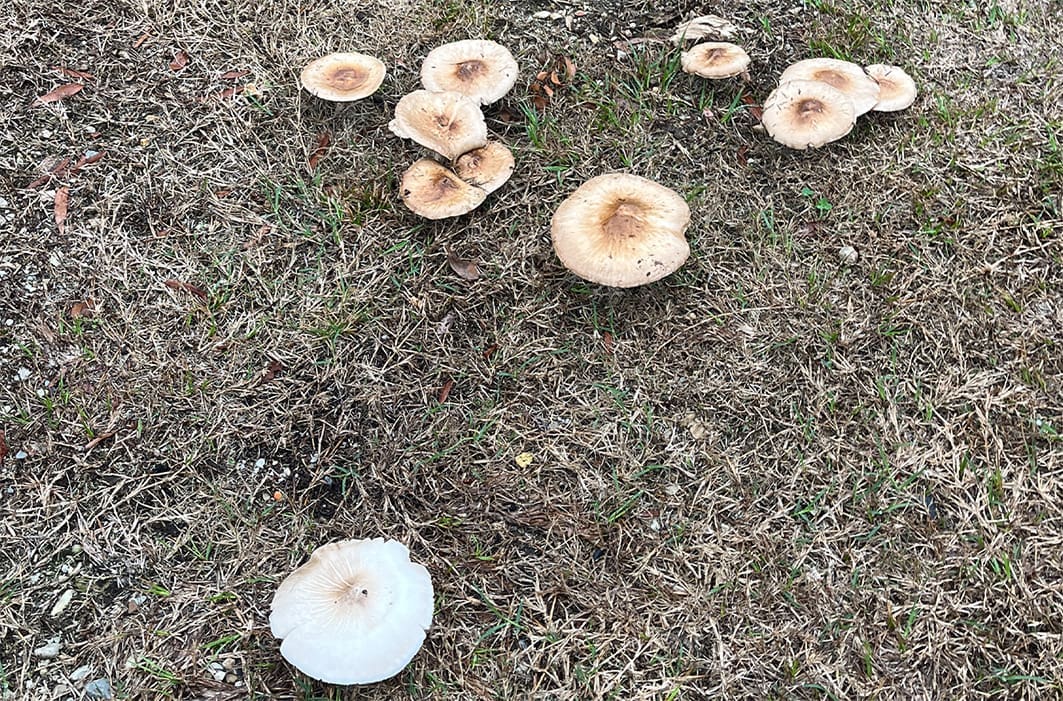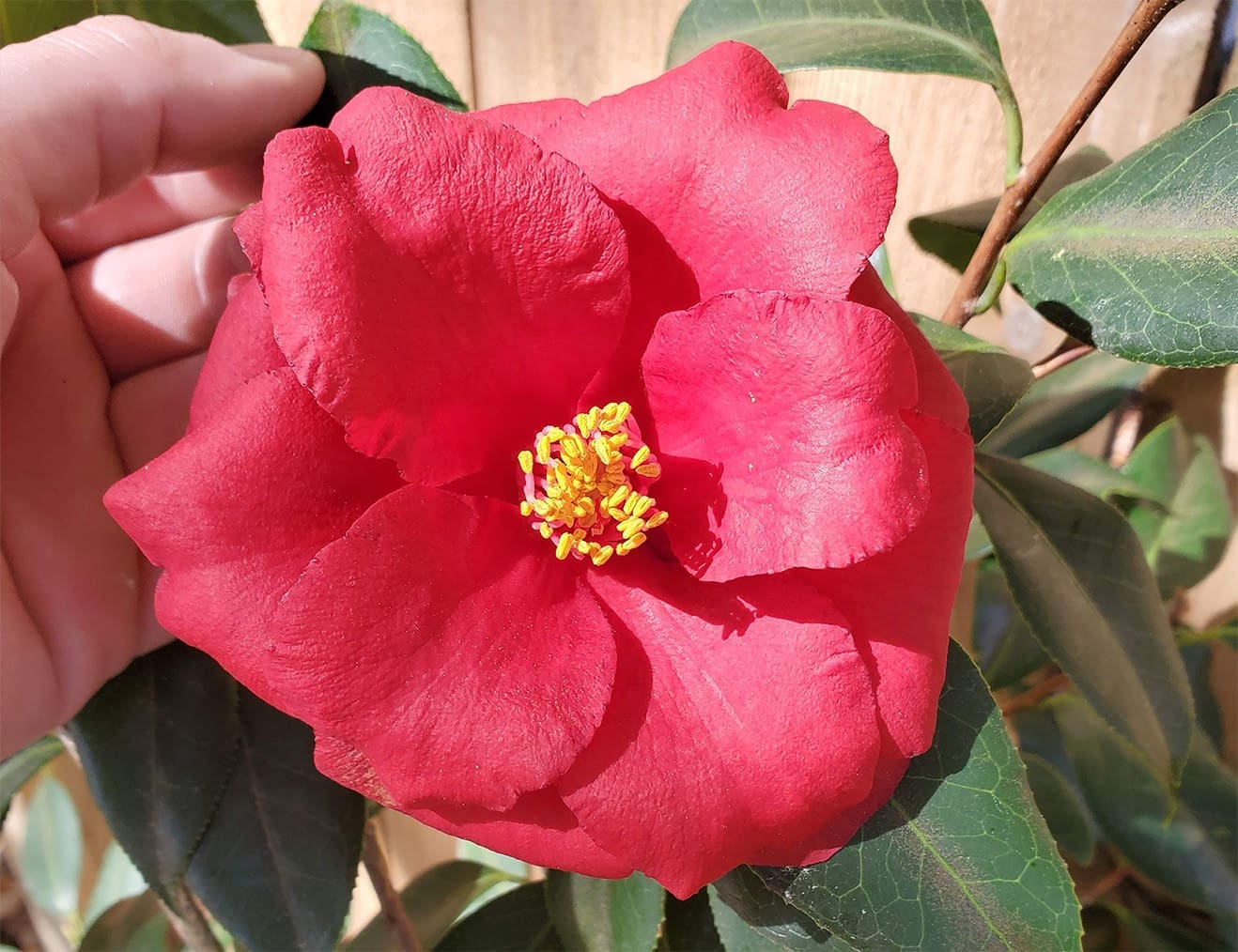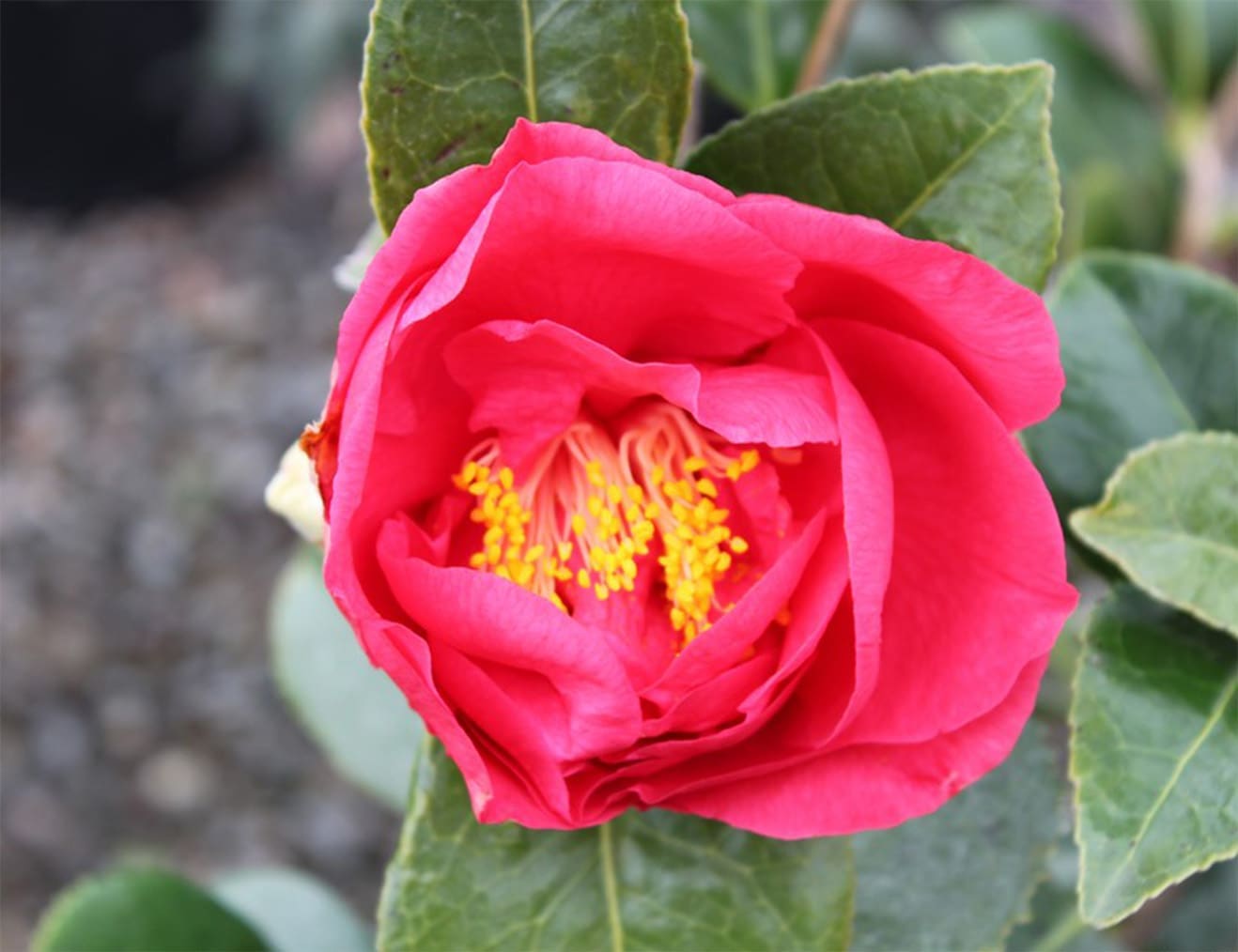
Mushroom Mischief: The Science Behind Surprise Sprouts
Mushrooms popping up in your yard?
It’s a sign that your fungi are thriving! When it’s rainy and cool like it’s been in our area lately, mushrooms can sprout as part of their natural growth cycle. We see this often after mature trees have been removed. We can grind the stump, but those extensive underground root systems take time to break down. Mushrooms are a sign they are decomposing. While they’re great for breaking down organic material, be cautious—some can be toxic.
Want to remove them?
- Pick by hand (wear gloves) and dispose in a sealed bag
- Mow regularly to prevent spore spread
Want to keep them from popping up again?
- Remove organic debris
- Dethatch and aerate your lawn
- Improve drainage
- Increase sunlight exposure
Plant of the Month:
Camellia Japonica – Winter’s Showstopper
When the rest of the landscape is taking a winter nap, Camellia japonica steals the spotlight with its lush, glossy green leaves and stunning blooms in shades of pink, red, and white. A true Southern favorite, camellias thrive in our zone (8A), loving the mild winters of the Auburn, Opelika, and Lake Martin areas.
These evergreen beauties prefer partial shade and well-draining, slightly acidic soil – think of them as the azalea’s classy winter cousin. Plus, they’re low maintenance once established, making them perfect for busy homeowners who still want a bit of seasonal drama in their garden. Plant one now, and by next winter, you’ll be enjoying its elegant, cold-weather blooms while the rest of the yard is still hitting snooze!
Camellia Fun Facts:
- Scientific Name: Camellia japonica
- Type: Broadleaf evergreen shrub
- Bloom Time: Late winter to early spring (varies by variety)
- Bloom Colors: Shades of pink, red, white, and even variegated
- Sun Needs: Partial shade (morning sun, afternoon shade is ideal)
- Soil Requirements: Well-draining, acidic soil (pH 5.5-6.5)
- Watering Needs: Keep soil moist but not soggy, especially during establishment
- Growth Rate: Slow to moderate; mature size varies (typically 6-12 feet tall and wide)
Camellia Care & Growing Tips:
- Planting: Best planted in fall or early spring. Choose a spot with good airflow to prevent fungal issues.
- Mulching: A 2-3 inch layer of pine straw or bark mulch (fallen leaves work, too) helps retain moisture and maintain soil acidity.
- Fertilizing: Our soil is so acidic, fertilizer is not necessary. But, if you must, you can feed with an acid-loving plant fertilizer in late winter/early spring after blooming.
- Pruning: Light pruning right after blooming helps shape the plant and remove any dead or weak branches. However, some of the most beautiful ones are untouched and left to do their thang!
- Pest Watch: Camellias are relatively pest-resistant but keep an eye out for tea scale, a common issue that appears as a white or sooty mold on leaves.
- Cold Protection: While hardy in Zone 8A, extreme cold snaps may cause bud drop. A frost cloth or burlap can protect young plants on frigid nights.

Want to learn more about our services? Nerd out on some plants? Let’s talk.



